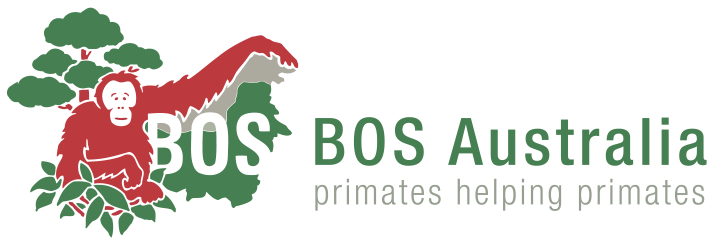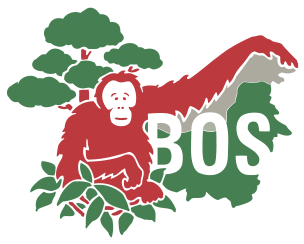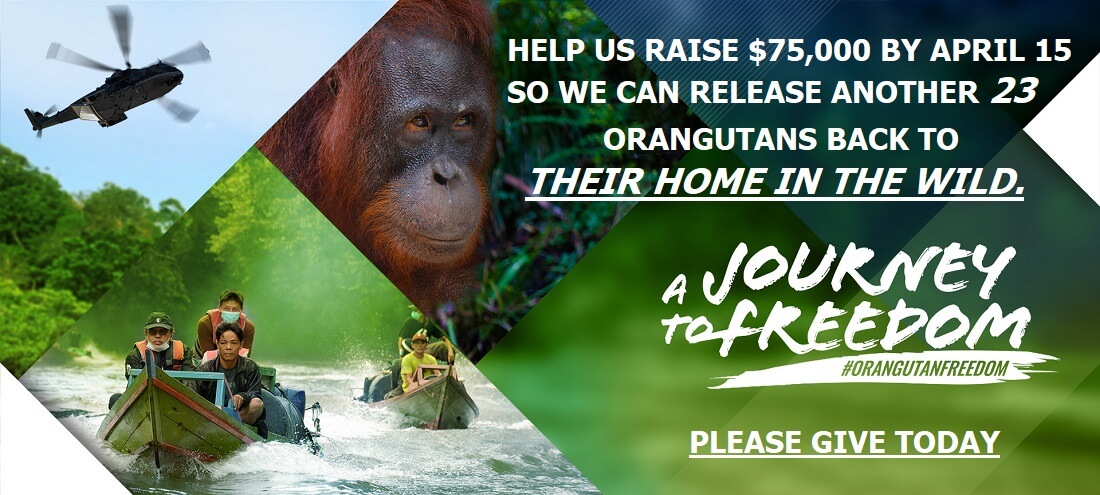The Search for Sanctuary: Orphan Apes
The Search for Sanctuary: Orphan Apes
Newsweek: Hillary Rosner: Published Aug 1, 2009 (From the magazine issue dated Aug 17, 2009)
A hundred or so orangutans have just returned from a day at “forest school,” where they learn to find food, use tools and fear snakes. Assembled on a lawn, they act much like any group of kids at recess—congregating in small groups, clocking each other over the head, holding hands, turning somersaults and adroitly climbing a jungle gym. These apes are orphans, having lost their forest homes to palm-oil plantations and their mothers to poachers who sell the babies to an illegal pet trade. A few still bear the marks etched into their necks from the months or years they spent in chains. The staff at the Nyaru Menteng orangutan sanctuary, in Central Kalimantan on the Indonesian side of Borneo, is painstakingly raising the apes, acting as surrogates for orangutan mothers who rear their young for up to eight years. Once they’re old enough and wise enough to survive on their own, the apes move to islands that serve as halfway houses until the animals can be placed back into the jungle.
The orphaned orangutans, however, may have nowhere to go back to. As Borneo’s rainforests continue to be felled at an alarming rate, suitable habitat is increasingly hard to come by. Roughly half of Borneo’s forests have already been demolished over the past few decades, the trees turned to wood products and much of the land transformed into plantations for palm-oil trees. A long-awaited July release of nearly 50 wild orangutans (animals that came to the shelter as adults) had to be scrapped when BHP Billiton, an international mining company with land holdings in a biodiversity hotspot known as the Heart of Borneo, decided to shut down its operations, meaning an earlier agreement to provide sanctuary had to be scrapped. “It was a real blow, and now it’s back to stage one,” said Michelle Desilets, director of the Orangutan Land Trust, a U.K.-based conservation group. Orphanages are now scrambling for creative ways of financing the acquisition of land, while there’s still some left.
The land squeeze is a direct consequence of the growing palm-oil trade. Palm oil is the world’s most popular edible oil, used in products ranging from Cadbury’s chocolate to Newman’s Own cookies to Dove cleansers to biodiesel. Indonesia and Malaysia, which share the island of Borneo, together provide nearly 90 percent of the global supply. More than 8 million acres of forest in Kalimantan are currently being razed or are allocated for palm plantations, according to a recent study. Resident animals are left homeless, particularly if the surrounding forest has already been destroyed. Workers hired to clear the land often kill the mother apes and sell the babies on the black market as pets. A small fraction are rescued by groups like the Borneo Orangutan Survival Foundation, which operates Nyaru Menteng.
The forest destruction has swelled the orphanage’s ranks to more than 600 orangutans, even though the facility was initially designed to hold about 100. Although about 50,000 orangutans live on Borneo, most of them occupy unprotected areas, where they’re vulnerable to development. “The number of animals is declining very fast,” said Marc Ancrenaz, codirector of the Kinabatangan Orangutan Conservation Project, a program run by the French organization Hutan, in Sabah, one of Borneo’s two Malaysian states. “We are going to lose a lot of them in the future.”
Conservationists have been trying to hold the line by defending existing strongholds. For instance, several groups, including WWF and the Frankfurt Zoological Society, recently banded together to protest a logging operation planned by two companies, Sinar Mas and Asia Pulp and Paper, which would destroy Sumatran rainforest where 100 rehabilitated orangutans have been released since 2002. Wildlife organization are also looking for new land, but there’s not much that’s suitable. Orangutan habitat must be big enough to sustain enough animals to breed and thrive. “If you find good lowland forest, which we can’t because it’s almost all gone here, you could put about two orangutans per square kilometer,” said Lone Dröscher Nielsen, the Danish director of Nyaru Menteng who has run the sanctuary for more than 12 years. “Where we’re looking we can probably only put one per square kilometer. But you have to have at least one per square kilometer or they’ll never meet each other.”
Further complicating matters, scientists are reluctant to mix wild orangutans with those that have been raised by humans. The rehabilitated animals could transmit human diseases—like tuberculosis or hepatitis—to wild communities, and could themselves be vulnerable to parasites or infections carried by wild orangutans. And then there’s the risk of transmitting social conventions—actions or forms of expression the animals picked up from people that might somehow pollute the wild culture of orangutans, threatening their survival. “Recent research has shown that much of orangutan behavior is learned, and there even appear to be regional variations,” said John Burton, founder of the World Land Trust, at a forum at the Linnean Society in London in April. That means conservation groups must find forest that doesn’t currently house any orangutans, which rules out many existing protected areas.
These restrictions have forced conservation groups to consider forests they might have overlooked in the past. Scientists have found, for instance, that orangutans do well in secondary forests, in which ancient trees have been logged out and newer trees have grown to take their place. The apes can also survive in forests that are logged according to sustainable management principles. Ancrenaz, who has found orangutans that have thrived in one sustainably logged Sabah forest for a dozen years, has noticed that orangutans often move through palm-oil plantations to get from one patch of forest to another. That prompted him to convene a meeting this fall to try to convince plantation owners to create corridors of rainforest trees linking otherwise isolated forests. Such an arrangement could greatly expand the available forest to the apes. “We really need to think outside of the box now,” said Ancrenaz. “Even the ecosystems that are protected, they’re interconnected. So we cannot just focus our efforts on protected forests.”
The biggest hurdle, though, is raising the money to acquire land. Conservation groups are banding together with bankers and entrepreneurs to explore market-based solutions. An international program called Reduced Emissions from Deforestation and Degradation, or REDD, could enable governments and local communities to profit from healthy forests by capitalizing on the forests’ ability to store carbon dioxide, a greenhouse gas. A study published in June in the scientific journal Conservation Letters found that conserving Borneo’s forests through the selling of carbon credits could be more profitable than turning them into palm-oil farms. The Orangutan Land Trust is working with Greenlinecare, a sustainable development firm in Jakarta, to negotiate with the Indonesian government a 60-year lease on an 8,000-acre island in the Kahayan River, whose carbon credits could finance all of Nyaru Menteng’s operations. The island could also sustain all of the sanctuary’s animals until additional land is found. (It’s too small to be a permanent home.) The plan would also create jobs for the local community, planting trees and keeping out illegal loggers. “When we run a project like this, we should see things not merely from the restoration point of view,” said Adiyoso Bambang, a partner in Greenlinecare. “Community development is inseparable from biodiversity and the forest. It’s an essential part of the project.”
The 8,000-acre island is small, but it’s the first of many carbon projects Greenlinecare is lining up in conjunction with TreeBanking, a forest carbon company in Broomfield, Colo. A growing number of firms are using REDD strategies to protect Borneo’s forests, with deals in the works on parcels of up to several hundred thousand acres. “Forest is needed, first and foremost,” says Richard Zimmerman, director of Orangutan Outreach, a New York conservation organization. “But is there hope? Yes. There has to be hope.”





